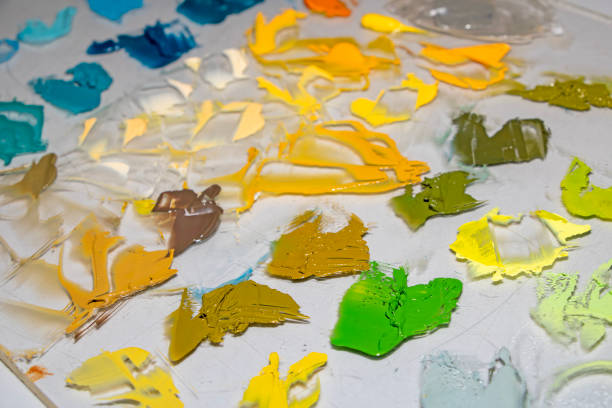Epoxy resin, a versatile material known for its durability, strength, and water resistance, has found its way into classrooms, captivating students and teachers alike with its endless creative possibilities. From crafting jewelry and art pieces to creating durable molds and prototypes, epoxy resin offers a unique hands-on learning experience. However, as with any material, safety remains paramount, especially in the context of a classroom setting.
Understanding the Potential Hazards of Epoxy Resin
Epoxy resin, when mixed and cured, is generally considered safe for handling. However, the curing process involves a chemical reaction that releases fumes, primarily amines and phenols. These fumes can pose respiratory irritation, particularly for individuals with allergies or sensitivities. Additionally, skin contact with uncured epoxy resin can cause allergic reactions or skin irritation.
Mitigating Risks and Ensuring Classroom Safety
To ensure a safe and enjoyable experience with epoxy resin in the classroom, implementing appropriate safety measures is essential:
Proper Ventilation: Adequate ventilation is crucial to minimize exposure to fumes. Conduct epoxy resin activities in well-ventilated areas, preferably with open windows or exhaust fans.
Personal Protective Equipment (PPE): Provide students and teachers with appropriate PPE, including gloves, safety glasses, and respirator masks, to prevent skin contact and inhalation of fumes.
Clear Instructions and Supervision: Ensure clear and detailed instructions are provided before any epoxy resin activity. Close supervision by trained adults is essential to guide students and ensure proper handling techniques.
Designated Workspace: Establish a designated workspace for epoxy resin activities, away from food preparation areas and other high-traffic zones.
Proper Cleanup: Implement proper cleanup procedures, including using designated tools and cleaning supplies, to minimize exposure to uncured resin and prevent cross-contamination.
Waste Disposal: Dispose of used PPE, mixing sticks, and any residual epoxy resin according to local regulations and hazardous waste disposal guidelines.

Additional Safety Considerations
Age Appropriateness: Consider the age and maturity level of students when selecting epoxy resin projects. Younger students may require simpler projects and closer supervision.
Individual Sensitivities: Be aware of any allergies or sensitivities among students and adjust activities accordingly. Alternative materials may be suitable for students with particular concerns.
Clear Communication: Maintain open communication with parents or guardians about the use of epoxy resin in the classroom, providing information on safety procedures and potential risks.
Embracing Creativity While Prioritizing Safety
Epoxy resin can enrich the classroom experience, fostering creativity, problem-solving skills, and an understanding of materials science. By prioritizing safety, implementing appropriate precautions, and providing clear guidance, teachers can create a safe and engaging environment for students to explore the wonders of epoxy resin while minimizing potential risks. Remember, safety is not an afterthought; it's an integral part of a successful and enjoyable epoxy resin experience in the classroom.
Post time: Jul-23-2024



